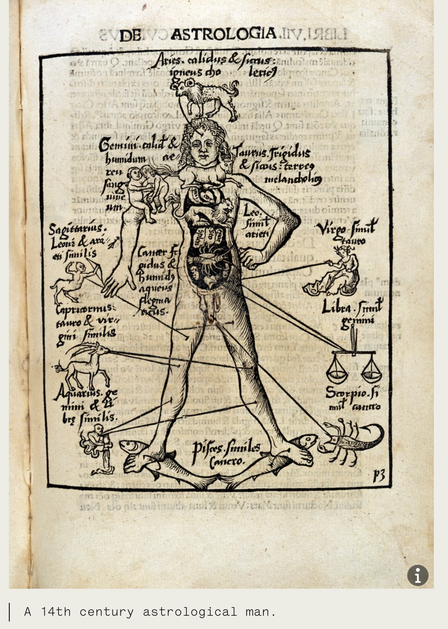Shakespeare and the Four HumoursWhat are the four humors? Humor or humour first appeared in English in the 14th century. Originally, it meant “the juice that flows in plants or animals, that is, bodily fluids.” It's kind of liquid. Humor in Latin was 'umor'. It means liquid flowing through the body. However, considering that humor also means 'whimsicality’, there is nothing strange about it. There is a Korean saying that ‘whimsicality boils over’, but how changeable is the liquid flowing through the body? Anyway, the origin of humor is related to the body like this. In Shakespeare's day, medicine and understanding of the human body were based on the theory of the four humors. This is also related to ancient Greek thought. The human body was thought of as a shell filled with blood, mucus, black and yellow bile, and they were believed to be interconnected. Among them, humor was believed to affect the entire human body, from health and emotions to appearance, speech and behavior. Therefore, in order to stay healthy, I thought I had to keep a balance of humor in my life. This is where the 4 humors came from. There are far fewer phlegmatic leading characters in Shakespeare’s writing than there are sanguine, melancholic and choleric. All the temperaments have their good and bad sides. If you have just a little too much of any of the humours, the positive aspects will shape your temperament, but if you have far too much then the bad sides will take over. Having an excess of one humour could be a bit of a vicious cycle: it both causes and is caused by your behaviour. "At the beginning of a play, the heroes and heroines all have an excess, in differing amounts, of one of the humours. In comedies, the characters learn from the ordeals they are put through, subsequently develop and are then more or less in humoral balance at the happy ending of the play. In tragedies, the characters usually start out with a normal excess of their temperamental humour, but thru their actions and reactions their excess is built up, leading to more and more extreme behaviour until all hope of restoring balance is lost." Shakespeare and the four humours by Nelly Ekström In other words, in Shakespeare's time, people dealt with mental problems such as madness and depression through plays. This is because he had an enlightened mindset that believed that mental problems such as depression, which he was interested in at the time, and emotions such as vengeance and envy and jealousy had negative effects on human health, and that he needed to overcome them with humor. The pleasure of humor, for example, is the opposite of melancholy. That's why it was considered a virtue to promote humor to prevent melancholy. The only person at court who could mock the king was the jester who created humor. Even in the case of King Lear, the person who stands next to King Lear, mad with depression, is the clown. It was in the 17th century that this kind of humor was used to mean 'joy' as it is today. Until the 16th century, the word humor was true to its original meaning. In other words, it simply represented a ‘state of mind’. Also, humor is based on empathy. It draws sympathy from the audience by mainly observing the other person or object, then finding out something that they did not know and telling the story.
0 Comments
Leave a Reply. |
Myungja Anna KohArtist Categories
All
Archives
July 2024
|
Proudly powered by Weebly


 RSS Feed
RSS Feed